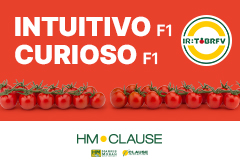As an overseas specialist, Explum is opting for new niches
In order to offer maximum quality, Explum is advocating for variety renewal, opting for new materials that provide resistance to fungus and rot, improved colour, Brix degrees and consistence. This last aspect is particularly important as on the commercial front the fruit are sent to distant countries such as Malaysia, Canada, Brazil, Uruguay, the Arab Emirates… and they are seeking other markets with open protocols that allow the cooperative to continue being competitive. “Brazil is the country that eats most plums, but more and more companies are exporting there and the devaluation of the currency is making exports more difficult, as is occurring with the dollar in countries that use this currency as a method of payment,” according to the general manager, José Aurelio García. On the other hand, the Russian veto, still without an expiry date, “continues to harm us” and like other countries, they have left the Chinese market on ‘standby’ due to the lack of flexibility in the transit and bureaucratic procedures that mean that the fruit is left at the ports for longer than might be wished for.
When addressing clients, CiEx is a good tool. The quality brand Ciruela de Extremadura fostered by Afruex started its venture last year and must now receive its final green light. “2017 was a transitory year and now we hope to give it a boost for consumers.”
Background and figures
Explum was established in 2012 in Valdelacalzada (Badajoz) and it is one of the few cooperatives that remain in the area. Its legal structure, probably “the most social existing,” imbues its character and leads it to opt for deeply-rooted produce such as plums and others such as nectarines and peaches, specialising in them.
85% of its total production corresponds to plums, which last year had a bad harvest as occurred with all the other stone fruits. The cooperative’s total volume dropped to 40% compared to 2016, reaching 7 million kilos, a figure that they hope to exceed this year.
Its production schedule goes from the end of May to the end of September and its cultivation area, all in the same region, covers a surface area of 430 hectares belonging to 70 farmers (60 of them cooperative members).
























